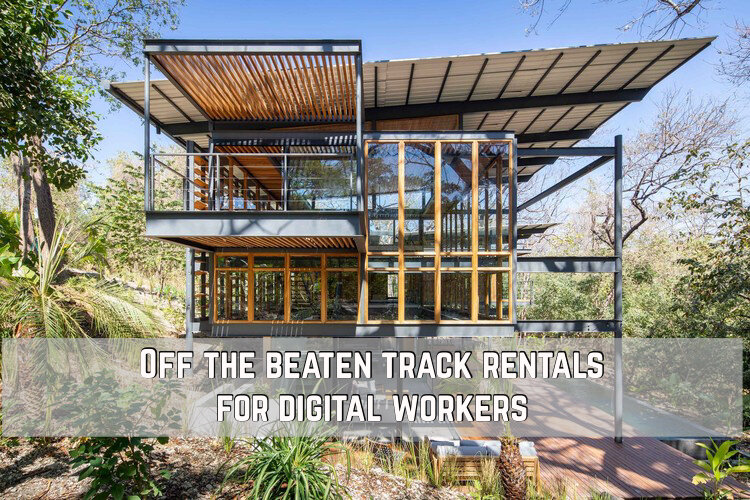What Corona Virus Means for Real Estate in Central America
What does Covid-19 mean for real estate in Central America?
There’s no sugar coating it. Covid 19 has dealt a severe blow to the world economy. Almost every sector has been negatively impacted by the unprecedented shutdown, with a few notable exceptions like like healthcare, tech, budget retail, and teleconferencing.
So what does that mean for the real estate market in Central America?
We are already seeing major effects on the market, as demand shifts and values change to reflect the new reality. But in every crisis there is opportunity. This article focuses on where those opportunities are and what the trends will be.
We will start with a macro view then move on to more specifics.
Travel and hospitality are major economic drivers in the region, and they’ve been especially hard hit. The lockdowns in Central America mean that tourists can’t get in and out. That also means that tourists aren’t staying in short term rentals, most notably AirBnB.
Worldwide AirBnB is cutting 25% of staff to cope with decreased demand from travellers. Avianca, the flagship Colombian airline and second largest in Latin America, just filed for bankruptcy protection to protect themselves while they try to chart a course through these turbulent skies. And LATAM, the largest carrier in the region is cutting pay by 50% for the next three months and laying off staff to cope with the decreased demand.
Tourism levels will likely take a few years to fully recover. The CEO of Boeing, David Calhoun, stated his company believes it will be 3-5 years for passenger levels to return to pre-virus levels. That is going to severely curtail the short term rental market across the world in general, and in Central America in particular.
Property owners who use AirBnB are already under pressure. In the United States AirBnB owners are being forced to sell. Prior to the virus there was a boom in people buying second, third (and more) properties and using the planned rental income to pay the mortgages. Others were building mini-hotel empires by mortgaging a number of properties, or taking out numerous master leases, then prepping and renting them out short term. Now those same people can’t cover the carrying costs of mortgages, or the master leases, plus the bills.
Similar trends extended to Central America, though manifested in different ways. Here a higher percentage of short term rentals are owned outright. Mortgage interest rates have always been higher, and buyer standards more rigorous, meaning fewer mortgages were given out in the region in general.
Central American banks have had to be careful with their capital. They don’t have the same implicit government guarantees as the American giants. Banks in the US are incentivized to be excessively risky as the government, and unfortunately by extension the US taxpayer, will aways bail them out after they make egregious mistakes.
Those factors mean there are significantly fewer mortgaged properties, as a percentage of the total, in Central America compared to the US. That lower relative amount of debt in the market does make it easier to carry the properties from a strictly financing perspective. The flip side, however, is that local owners are often more dependant on the rental income from their properties. So the secondary effect will be similar - that being there will be some excellent deals on property coming soon.
But should you buy them? That depends on you and what you want to do with the property.
If you’ve been looking property for your personal use and enjoyment, and aren’t as concerned about yield, you are in a different position that someone looking profit.
It the personal property you’ve been looking for becomes significantly cheaper, you might want to jump on it with a low offer. There will be some excellent bargains coming and you just might get it. Also with the worldwide economic turmoil, and governments printing money, a great deal on bricks and mortar in an attractive destination can be a good hedge in your portfolio if nothing else.
If you are looking for a rental property to generate income though, you will need to be very selective and accept the fact that short term income will be lower. It’s important to weigh the decreased near term rents, versus the discounted purchase price, to determine if the upside warrants the risk profile. You need to invest where the demand will be in the future, not where it was last year. The ideal property won’t necessarily be the same as before the virus.
So what might the new trends look like?
Tourism levels will drop significantly for the next couple years compared to the last two. But places where travellers feel safe in will be the first to recover:. “Airbnb-type places that you can disinfect yourself, especially in a more remote setting: I think those would definitely be the first step for us traveling outside. Fear of humans and crowded places will be etched in our hearts for the rest of our lives.” Rafat Ali, CEO of Skift, a travel industry publication. - Article from Vox.
Another major trend coming out of this is that significantly more people will be working remotely, permanently. For example Twitter just went permanent work from home for all employees. Facebook is following suit with a large number of it’s 48,000 staff. Even a lot of white collar employees in “non-tech” companies will be allowed to work remotely. Either permanently or for long stretches at a time. Both of which will positively affect Central America as it’s a low cost region that shares the US continental time zones.
Eventually month to month rentals to digital nomads may actually increase. “Homads, a monthly rental listings startup, saw a 500 per cent month-on-month increase in site visits in mid-March. Kopa, which also specialises in monthly rentals, has seen a tenfold increase in hosts and listings on its platform. “ - Wired article.
Even Airbnb subtly changed it’s position. It is promoting more monthly stays instead of just weekend getaways in many markets. And those prices for month long stays on the platform have been deeply discounted.
So what does this mean for you as someone considering investing in Central America?
There will be bargains in the cities
Areas with a higher ratio of short term rental units relative to the permanent population will see sharper decreases in rental incomes. Especially those that are densely populated areas that normally see large amounts of business travel. The short term effects will be dramatic.
Those decreases in short term rental incomes foretell excellent buys in the short and medium term in the cities. Foreign owners in many of the popular tourist markets may want to sell. Local owners, especially ones that have mortgages, may need to sell. Their planned income from short term rentals won’t be enough to cover carrying costs. Panama City and San Jose, Costa Rica specifically should see some excellent values.
The most significant decreases in rental income, on both short and long term rentals, will likely be in the upper range of the market. It becomes difficult to charge the same high rentals rates for luxury properties when demand levels drop. If you were looking for a bargain on a luxury apartment in Panama City it will be a good time to shop.
Long term the guests will come back to those urban cores, which are draws for both the business crowds and tourists, but it will take a while. When shopping for a property look for places well set up for a home office with a view. Ideally they would have attractive outdoor spaces within the property and contain, or be nearby, amenities like grocery stores, pools and gyms.
Certain properties will do well with month + rentals
Off-the beaten track locations with good name recognition should hold up better. Places already well-known to digital remote workers, with stable access to high speed internet, amenities, and space between them and other people should fare the best. Ideally the properties should be positioned with marketing strategies highlighting their qualities as a “getaway” where they can still work.
Places with outdoor activities that can be done with some distance are optimal. Beach destinations with surfing and swimming opportunities will be attractive. As well as jungle and mountain getaways. Nosara, Costa Rica should do all right. San Juan Del Sur, Nicaragua will see longer-term digital nomads visiting once flights resume.
Looking at data from different markets in the North America seems to support this hypothesis:
Source: AirDNA
In the table above it’s clear which locations are seeing the fastest rebound in AirBnB bookings as areas reopen. With the exception of New Braunfels all of the destinations are adjacent to bodies of water. None of them are densely packed major cities. Almost all are then locations where people get get outside, enjoy nature, and not be packed one on top of another.
Source: AirDNA
The second table shows the locations seeing the slowest rebounds in bookings. Notice a trend? It’s all major cities.
This data is all from AirDNA which is an analytics firm for the short term rental market. While no company currently provides similar data for the Central American markets- it’s reasonable to assume the same trends apply. Lake, ocean and mountain getaways will do better in terms of short term rental income generation. City centres will be slower to recover.
Properties well suited to month-to-month or longer term rentals will do better in the next year or two for rental income. Specifically properties with well equipped kitchens, laundry, and space to lounge inside the property. So people can stay, work, and live for longer stretches without having go out.
More people will be taking “working vacations” and living remotely in the coming months and years. In the short term, as mentioned, they likely won’t want to be packed into urban cores. At the same time they will still wantthe amenities of home - as well as fast internet connections and comfortable accommodation.
Alternatively specific properties in colonial cities will likely see deep discounts soon. They might hold up decently in the rental market. Antigua, Guatemala and Granada, Nicaragua are popular cities with amenities. There will be a high number of sellers relative to buyers so there will be bargains.
For colonial properties anything with an internal courtyard and pool worthy of Instagram shots would be most likely to attract remote digital workers. If you’re picking up a value-priced property now, set up it for those month to month (or longer term) rentals. That should to cover costs and generate at least some income in the short term. Then in a couple years when short term rental prospects improve you can switch to short term stays for greater yield.
Are you looking to make an investment in the region? Looking for a contact, agent or lawyer in any of the locations I mentioned?
Check out our consulting page for more about how I can help you invest, and make the right decisions in Central America.
Joel Stott-Jess
Cell / WhatsApp: +505 8176 8624
Skype: joel.stott.jess
Facebook: The Central Investor
Instagram: thecentralinvestor
YouTube: The Central Investor

















